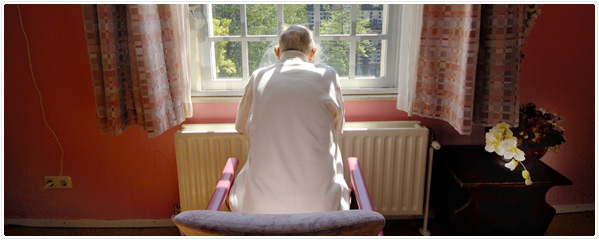Elder Abuse, Neglect and Exploitation
Elder Abuse, Neglect and Exploitation
By Donald D. Vanarelli, Esq.
Certified Elder Law Attorney, by the National Elder Law Foundation; Accredited by the American Bar Association
I. Defining Elder Abuse, Neglect and Exploitation
Elder abuse is broadly defined as the infliction of harm on an older adult.1 The physical or psychological abuse of an elderly person, the theft of an elderly person’s money or property, or the intentional or unintentional failure to take care of an elderly person, are examples of elder abuse, neglect and/or exploitation.
Elder abuse is a problem that grows with the increasing elder population. Census data indicates that in the year 2000, 35 million people were age 65 or older, but by the year 2030, that over-65 population will double.2 In New Jersey, as of May 2002, there were 1.1 million senior citizens, representing an increase of nearly 8 per cent since 1990.3
According to information presented at a 2002 United Nations Second World Assembly on Ageing, in the United States between 1986 and 1996, the National Center on Elder Abuse reported a 150 per cent increase in reported incidents of abuse to the state adult protective services.4
The federal government has estimated that 1.5 million elders suffer from abuse. That translates to one (1) in twenty (20) older persons who is the victim of abuse.5 Senate research estimates that between 500,000 and 5 million incidents of elder abuse occur annually.6
Nevertheless, in what has been described as the “tip of the iceberg theory,” only 14% of all incidents of abuse are reported to authorities.7
II. The Victim and the Abuser
The average victim of abuse is a female, age 75 or older. The rate of abuse and neglect of persons age 80 and over is two to three times higher than that for the general public.8 The average victim possesses limited resources. Generally, the victim is widowed, frail, vulnerable because of mental or physical conditions, and resides with family. In cases of self-neglect, the average age of the elderly person is 77. Sometimes the victim resides in an institution. The victim may have fewer alternatives to remove him/herself from the abusive situation because of his/her financial condition, health or age.
Often, the abuser is the victim’s middle-aged child who is the victim’s caregiver. In fact, adult children are responsible for nearly half of the cases of elder abuse or neglect.9 The abuser may also be the victim’s spouse or grandchild. Nearly 90% of the incidents of domestic elder abuse and neglect involve a perpetrator who is a family member. An individual without close family may be exploited by a “friend.” If the individual resides in an institution, the abuse is usually an employee of the facility, but another resident of the facility may also be the abuser.
III. Categories of Elder Abuse
Broadly defined by the federal government, there are three (3) basic categories of elder abuse: (A) domestic elder abuse; (B) institutional elder abuse; and (C) self-neglect or self-abuse.
A. Domestic elder abuse refers to any of several forms of maltreatment of an older person by someone who has a special relationship with the elder (e.g., a spouse, sibling, child, friend, or caregiver). The most prevalent form of abuse is by younger family members who are responsible for the care of their elder relatives.
The National Center on Elder Abuse has defined seven (7) types of domestic elder abuse:
- Physical abuse, defined as the “use of physical force that may result in bodily injury, physical pain or impairment”;
- Sexual abuse, defined as “non-consensual sexual contact of any kind with an elderly person”;
- Emotional abuse, defined as the “infliction of anguish, pain, or distress through verbal or nonverbal acts”;
- Financial or material exploitation, defined as the “illegal or improper use of an elder’s funds, property, or assets”;
- Neglect, defined as “the refusal or failure to fulfill any part of a person’s obligations or duties to an elderly person”;
- Self-neglect, defined as “behaviors of an elderly person that threaten the elder’s health or safety”; and
- Abandonment, defined as “the desertion of an elderly person by an individual who has physical custody of the elder or by a person who has assumed responsibility for providing care to the elder.”
B. Institutional elder abuse refers to abuse that occurs in residential facilities for older persons (e.g., nursing homes, foster homes, group homes, etc.). Perpetrators of institutional abuse usually are persons who have a legal or contractual obligation to provide elder victims with care and protection (e.g., paid caregivers, staff, professionals).
The Department of Health and Human Services has identified seven (7) different types of elder abuse of nursing home residents:
- Physical Abuse – The infliction of physical pain or injury, including sexual abuse. Examples include pushing or slapping a resident, or intentionally doing bodily harm.
- Misuse of Restraints – Chemical or physical control of a resident beyond a physician’s orders or not in accordance with accepted medical practice. Examples include staff failing to loosen the restraints within adequate time frames or attempting to cope with a resident’s behavior by inappropriate use of drugs.
- Verbal/Emotional Abuse – Infliction of mental or emotional suffering. Examples include demeaning statements, harassment, threats, etc.
- Physical Neglect – Disregarding necessities of daily living. Examples include failure to provide necessary food, clothing, clean linens or daily care of the resident’s necessities.
- Medical Neglect – Lack of care for existing medical problems. Examples include ignoring a necessary special diet, not calling a physician when necessary, and not being aware of the possible negative effects of medications.
- Verbal/Emotional Neglect – Creating situations in which esteem is not fostered. Examples include not considering a resident’s wishes, restricting contact with family, and ignoring the resident’s need for verbal and emotional contact.
- Personal Property Abuse (Material Goods) – Illegal or improper use of a resident’s property by another for personal gain. Examples include the theft of a resident’s private television, false teeth, clothing, or jewelry.
C. Self-neglect or self-abuse is an act, or failure to act, by the elderly person which is life-threatening or which can lead to serious injury. Examples include the refusal to eat, refusal to take medication or visit the doctor as directed, and the refusal to bathe or follow other basic hygiene routines.
IV. Signs of Physical, Emotional or Psychological Elder Abuse
An elderly person who is frail, dependent on others, and living in a vulnerable situation is a candidate for abuse.
Some signs of abuse to watch for include:
Direct
- Bruising, burns, fractures
- Injury incompatible with history or not properly cared for
- Malnutrition/dehydration without illness or related injury
- Inappropriate medication administration
- Threats, harassment, insults
- Refusal to allow travel, visits with friends, attendance at church; isolation
- Poor personal hygiene
Indirect
- Brought to hospital/doctor by other than caregiver
- Delay between injury/illness and request for treatment
- Hospital/doctor “hopping”
- Similar injuries/incidents
- Lack of concern of caregiver
- Withdrawn, agitated, fearful behavior in the presence of caregiver
- Crisis, alcohol or drug abuse in family
Periodic visits of elderly clients by social workers, nurses and other professionals can be critical in the early detection of elder abuse.
Elder Abuse, Neglect and Exploitation Continued >








Vanarelli & Li, LLC on Social Media